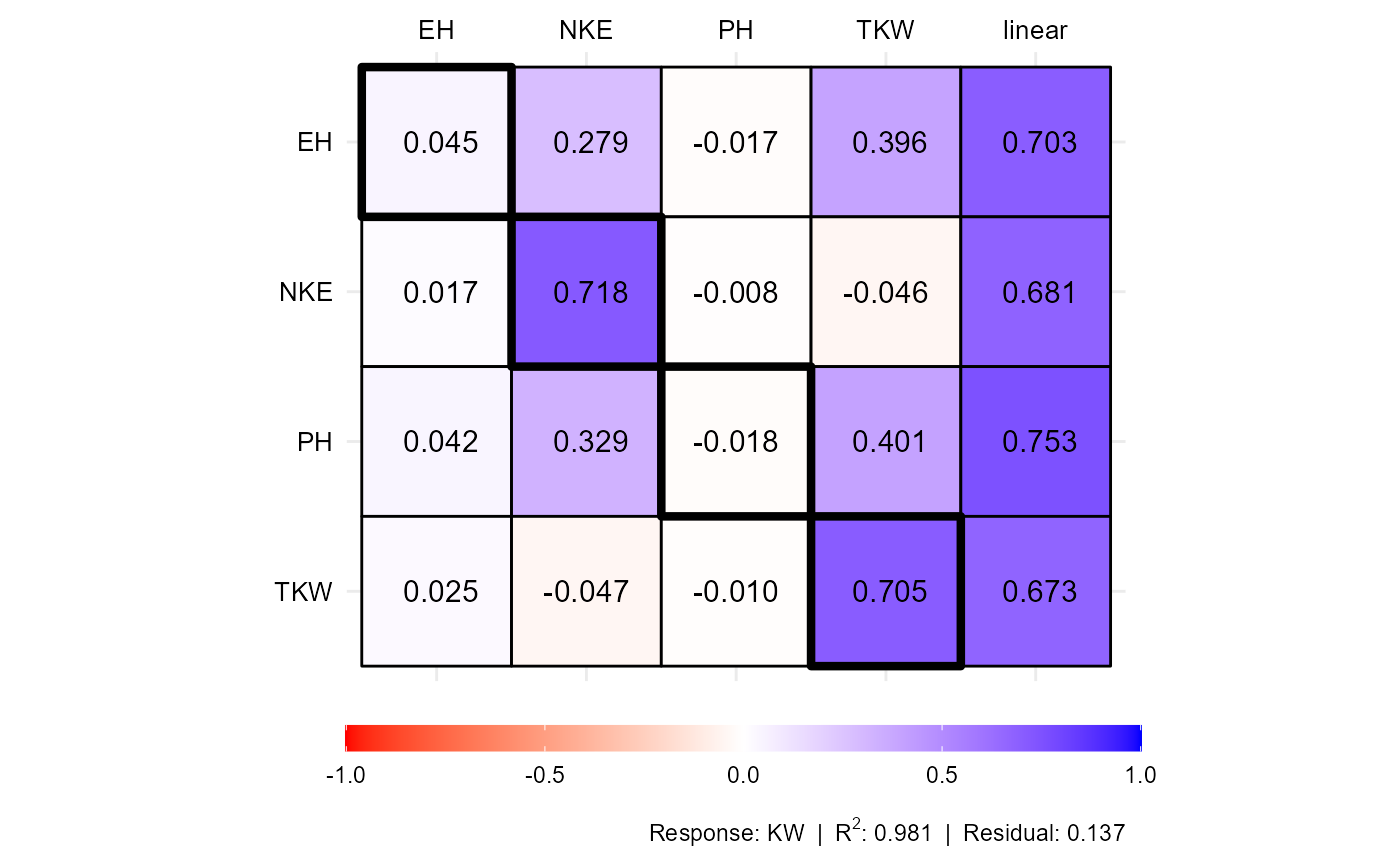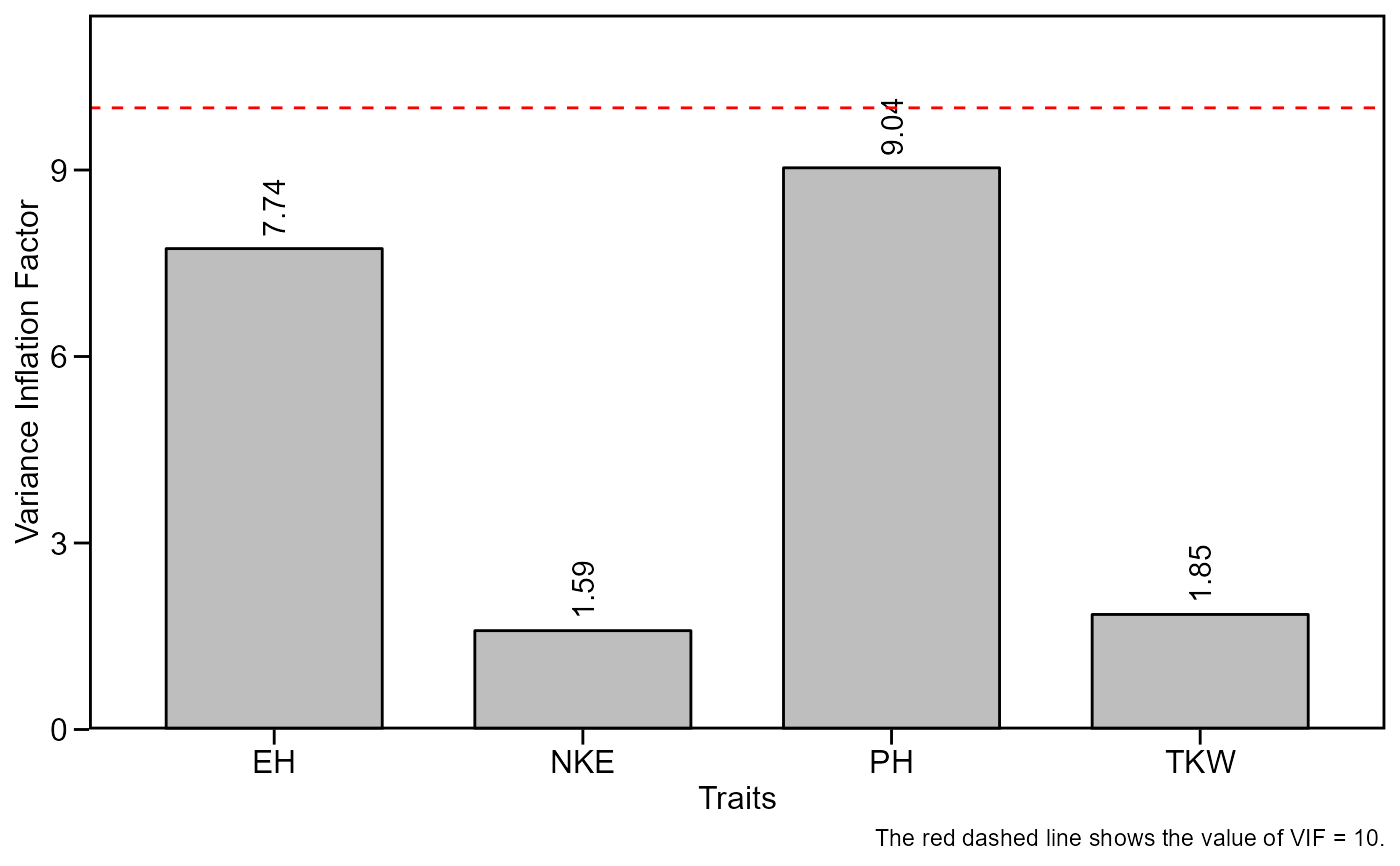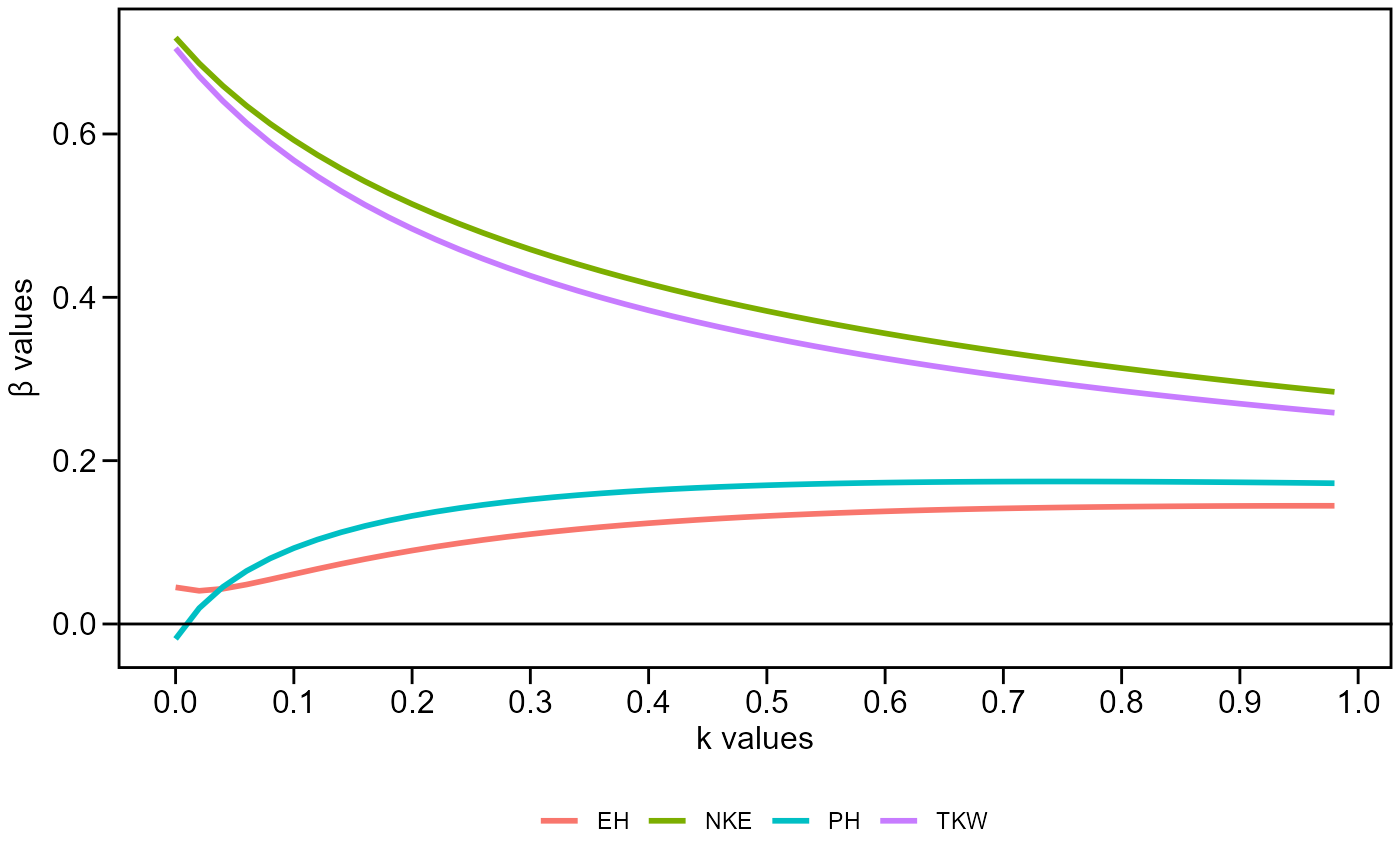Plots an object generated by path_coeff(). Options includes the path
coefficients, variance inflaction factor and the beta values with different
values of 'k' values added to the diagonal of the correlation matrix of
explanatory traits. See more on Details section.
Usage
# S3 method for path_coeff
plot(
x,
which = "coef",
size.text.plot = 4,
size.text.labels = 10,
digits = 3,
...
)Arguments
- x
An object of class
path_coefforgroup_path.- which
Which to plot: one of
'coef','vif', or'betas'.- size.text.plot, size.text.labels
The size of the text for plot area and labels, respectively.
- digits
The significant digits to be shown.
- ...
Further arguments passed on to
ggplot2::theme().
Details
The plot which = "coef" (default) is interpreted as follows:
The direct effects are shown in the diagonal (highlighted with a thicker line). In the example, the direct effect of NKE on KW is 0.718.
The indirect effects are shown in the line. In the example, the indirect effect of EH on KW through TKW is 0.396.
The linear correlation (direct + indirect) is shown in the last column.
Author
Tiago Olivoto tiagoolivoto@gmail.com
Examples
# \donttest{
library(metan)
# KW as dependent trait and all others as predictors
# PH, EH, NKE, and TKW as predictors
pcoeff <-
path_coeff(data_ge2,
resp = KW,
pred = c(PH, EH, NKE, TKW))
#> Weak multicollinearity.
#> Condition Number: 40.232
#> You will probably have path coefficients close to being unbiased.
plot(pcoeff)
 plot(pcoeff, which = "vif")
plot(pcoeff, which = "vif")
 plot(pcoeff, which = "betas")
plot(pcoeff, which = "betas")
 # }
# }
